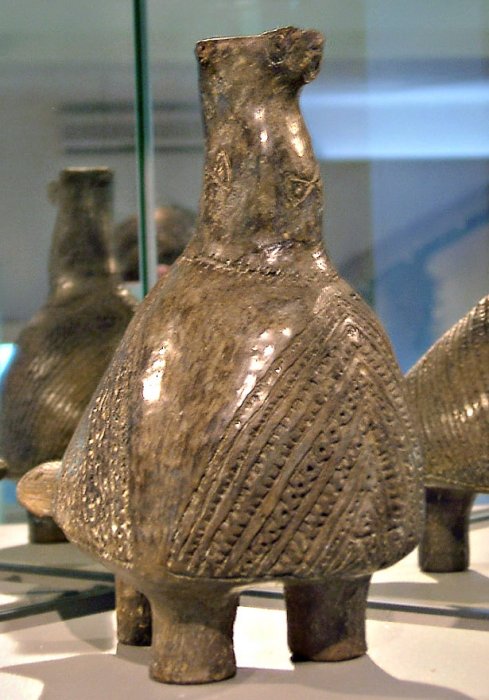Oldest Indo-European Calendar Based On The Orion Constellation Is Engraved On A Vucedol Vessel
Jan Bartek - AncientPages.com - The beauty of stargazing is that so many celestial objects are visible to the naked eye. Ancient people who did not have access to modern, sophisticated telescopes could study stars, planets, the Sun, the Moon, and comets. This allowed ancient civilizations to produce startling accurate calendars and astronomically align temples and pyramids.
Almost 5,000 years ago, the Vucedol culture that lived on the banks of the Danube River watched the night skies and made the oldest Indo-European calendar based on the cycles of Orion.
The Orion constellation is visible to the naked eye, but if you use binoculars you see the stars much better of course. Credit: Adobe Stock - vchalup
The brightest star in the Orion constellation is Rigel, located about 863 light-years away. The blue supergiant, clearly visible in the Northern and Southern hemispheres, is about 47,000 times as luminous as our Sun.
In 1978, archaeologists excavated at a site where the present-day Hotel Slavonija is located in the eastern town of Vinkovci in Croatia. In ancient times, the area was occupied by the Vucedol culture that flourished between 3000 and 2200 B.C
Compared to many other ancient civilizations, the Vucedol culture is not particularly famous, but one should remember that the history of Vucedol culture goes far back in time. The Vucedol culture thrived contemporary with the Sumerian period in Mesopotamia, the Old Kingdom of Egypt, and the early Troyans. The Vucedol culture did not build magnificent pyramids or ziggurats, but their unique ceramics have attracted interest worldwide.
When archaeologists examined the site, they discovered a stunning ancient vessel engraved with beautiful ornaments with deep symbolic meaning. At first glance, the artifact appeared to be a beautiful object that skilled ancient Balkan craftsmen created. Still, later studies revealed the vessel had not been produced to express artistic skills.
The ornaments on the Vucedol vessel represent the oldest Indo-European calendar based on the Orion cycles. Credit: Emilia Pasztor, Türr István Museum
Aleksandar Durman from Zagreb's Faculty of Humanities and Social Sciences, who led the archaeological team, examined the engraved ornaments on the Vucedol vessel and discovered this was no ordinary household object.
The creators of the Vucedol vessel expressed sophisticated astronomical knowledge through art.
Produced around 2,600 B.C., or possibly even earlier, the Vucedol vessel "represents the most complete Indo-European calendar, which is based on the astral symbolism with pertinent constellations to all four seasons.
Although it was created in the same time period as the Sumerian and Egyptian calendars, it does not represent their replica, since it is based on the 45th parallel.
The climate conditions which correspond to that latitude have four seasons as a consequence. The constellations which represent specific seasons are marked as during the time of twilight as the first features on the evening sky (Orion, the Pleiades, Gemini, Pisces, Cassiopeia, Cygnus).
The usual imagery of the Sun, without any imagery of the Moon, confirms the complete absence of the lunar symbolism which is in fact the Indo-European characteristic. In the Vučedol culture, the year used to begin with the spring equinox, when the Sun symbolically used to step in the place of the most important winter constellation - Orion.
That is to say, during that night, the Orion belt (three stars) would become visible for a short time for the last time in the winter sky, then disappearing for several months. That congruity, the disappearance of Orion at spring equinox, was first recorded by the inhabitants of the Vučedol culture. It helped them determine the first day in their year with the actual number of days of the yearly revolution of Earth around the Sun." 1
After many years of study, scientists could determine the "engraved ornaments represent the constellations which dominate the night sky above Vinkovci, and specifically:
- Spring: Orion and Sun
- Summer: the Pleiades, Cassiopeia and Cygnus
- Autumn: the Pleiades, Gemini and Pisces/Pegasus
- Winter: the Pleiades, Gemini, Pisces/Pegasus, Cassiopeia and the dominant winter constellation Orion" 1
Based on the results of these long studies, Professor Durman concluded that the Vucedol vessel had been manufactured to govern the seasonal life of people in this region. This means the Vucedol vessel is one of the oldest European calendars ever discovered. It is undoubtedly the oldest calendar based on the Orion cycles ever unearthed in Europe.
Archaeological discoveries show the Vucedol people built their settlements on "naturally elevated prominent positions, located in the vicinity of rivers or smaller streams. Such positions represent a very logical choice, important from the strategic point of view.
Fortification of established settlements depended primarily on the natural configuration of the soil and on landscape features. The large number of fortified settlements suggests that the Vučedol population yearned for a more peaceful and continuous life in one place, as well as the tendency to settle at previously inhabited and deserted positions which could easily be fortified." 2
This means the Vucedol calendar was not only crucial from an agricultural point of view. It also helped the Vucedol culture to determine which areas had suitable ground to construct settlements people could occupy for a long time.
One of the most famous pieces of Vučedol is the ritual vessel made between 2800 and 2500 B.C. Credit: Public Domain
It is also interesting to see "some of the geometric designs on the Vucedol calendar pot panels show striking similarity with motifs of the squares of the game boards found in funerary context of the Royal Cemetery of Ur dated from the mid-third millennium BC. This TwentySquares Game was played all across the ancient Near East. They attest to the cultural contacts across the vast region that stretches between the Euphrates and Indus rivers." 3
Updated on October 8, 2022
Written by Jan Bartek - AncientPages.com Staff Writer
Copyright © AncientPages.com All rights reserved. This material may not be published, broadcast, rewritten or redistributed in whole or part without the express written permission of AncientPages.com
Expand for references- Dr. Aleksandar Durman - Orion - The Oldest Indo-European Calendar, Vinkovci Tourist Board
- Miloglav, Ina. " A Model Of Ceramic Production, Specializing And Standardization Of Ceramic Assemlages On The Basis Of Two Sites Of The Vucedol Culture In Eastern Croatia." Anthropologie (1962-) 51, no. 2 (2013): 195-212.
- Pasztor, Emilia. (2015). Celestial Symbolism of the Vučedol Culture. 10.1007/978-1-4614-6141-8_134.
More From Ancient Pages
-
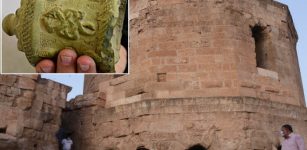 The Main Gate Of Historical 9th-Century Old Harran Palace Unearthed
Archaeology | Oct 25, 2020
The Main Gate Of Historical 9th-Century Old Harran Palace Unearthed
Archaeology | Oct 25, 2020 -
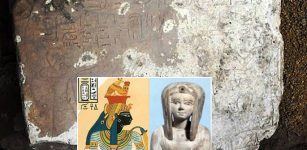 Limestone Stela Of Liberation Discovered In Kom Ombo Temple In Aswan, Egypt
Archaeology | Oct 17, 2018
Limestone Stela Of Liberation Discovered In Kom Ombo Temple In Aswan, Egypt
Archaeology | Oct 17, 2018 -
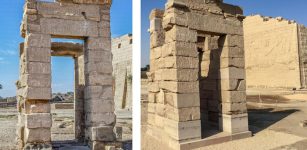 Ancient Egyptian Monuments Threatened By Climate Change Restored By Oriental Institute
News | Mar 9, 2023
Ancient Egyptian Monuments Threatened By Climate Change Restored By Oriental Institute
News | Mar 9, 2023 -
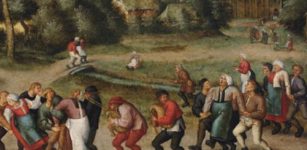 Unexplained Phenomenon Of The Dancing Mania That Occurred During The Middle Ages
Featured Stories | Aug 1, 2014
Unexplained Phenomenon Of The Dancing Mania That Occurred During The Middle Ages
Featured Stories | Aug 1, 2014 -
 2,000-Year-Old Instruments Used By Roman Surgeons Revealed By Archaeological Scanners
Archaeology | Jul 17, 2024
2,000-Year-Old Instruments Used By Roman Surgeons Revealed By Archaeological Scanners
Archaeology | Jul 17, 2024 -
 First Scandinavian farmers were far more advanced than previously thought
News | Aug 23, 2015
First Scandinavian farmers were far more advanced than previously thought
News | Aug 23, 2015 -
 Unraveling The Mystery Why Experienced Norse Sailors Feared The Oceans And Seas
Myths & Legends | Oct 8, 2024
Unraveling The Mystery Why Experienced Norse Sailors Feared The Oceans And Seas
Myths & Legends | Oct 8, 2024 -
 Return Of Pahana – The Lost White Brother Of The Hopi And The Sacred Tablet
Myths & Legends | Mar 5, 2018
Return Of Pahana – The Lost White Brother Of The Hopi And The Sacred Tablet
Myths & Legends | Mar 5, 2018 -
 Gigantic Unfinished Stone Structures Cut With Amazing Stone-Working Techniques
Civilizations | Sep 21, 2015
Gigantic Unfinished Stone Structures Cut With Amazing Stone-Working Techniques
Civilizations | Sep 21, 2015 -
 Does Palenque Mask Depict Mayan Ruler Pakal? New Discovery At Palenque
Archaeology | Aug 27, 2018
Does Palenque Mask Depict Mayan Ruler Pakal? New Discovery At Palenque
Archaeology | Aug 27, 2018 -
 Patara Lighthouse Built By Emperor Nero In 64 AD Will Shine Again
Archaeology | Mar 5, 2020
Patara Lighthouse Built By Emperor Nero In 64 AD Will Shine Again
Archaeology | Mar 5, 2020 -
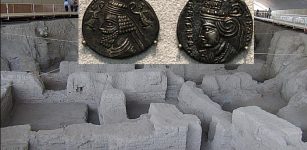 Mysterious Medes: Was It An Ancient City Of Ecbatana?
Archaeology | Jul 3, 2020
Mysterious Medes: Was It An Ancient City Of Ecbatana?
Archaeology | Jul 3, 2020 -
 Archaeologists Shed Light On The Lives Of Stone Age Hunter-Gatherers In Britain
Archaeology | Jan 20, 2023
Archaeologists Shed Light On The Lives Of Stone Age Hunter-Gatherers In Britain
Archaeology | Jan 20, 2023 -
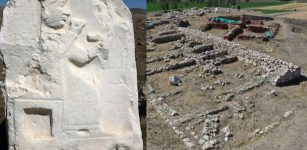 Ancient Hittite Temple Dedicated To The Goddess Of Night To Be Unearthed
Archaeology | Oct 2, 2021
Ancient Hittite Temple Dedicated To The Goddess Of Night To Be Unearthed
Archaeology | Oct 2, 2021 -
 Controversial Tunnel Plan Near Stonehenge Gets U.K. Government Approval – Shocked And Angry Opponents Will Challenge The Decision In High Court
News | Nov 13, 2020
Controversial Tunnel Plan Near Stonehenge Gets U.K. Government Approval – Shocked And Angry Opponents Will Challenge The Decision In High Court
News | Nov 13, 2020 -
 Mysterious Bronze Age Burial Chamber Discovered In Devon, UK
Archaeology | May 16, 2024
Mysterious Bronze Age Burial Chamber Discovered In Devon, UK
Archaeology | May 16, 2024 -
 Queen Mama Ocllo: Legendary Wife Of Sapa Inca Manco Capac In Beliefs Of Andean People
Featured Stories | May 6, 2020
Queen Mama Ocllo: Legendary Wife Of Sapa Inca Manco Capac In Beliefs Of Andean People
Featured Stories | May 6, 2020 -
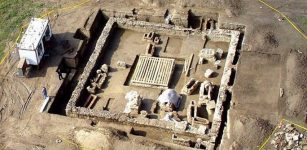 Viminacium Ancient Roman Camp: Sarcophagus With Skeletons, Rich Grave Goods Found In Serbia
Archaeology | Jun 5, 2018
Viminacium Ancient Roman Camp: Sarcophagus With Skeletons, Rich Grave Goods Found In Serbia
Archaeology | Jun 5, 2018 -
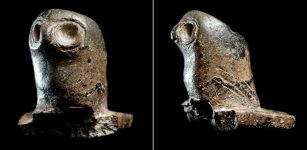 Enigmatic 2,000 -Years-Old Carved Stone Owl Pipes – An Ancient Unsolved Secret Of Illinois
Artifacts | Oct 4, 2018
Enigmatic 2,000 -Years-Old Carved Stone Owl Pipes – An Ancient Unsolved Secret Of Illinois
Artifacts | Oct 4, 2018 -
 Were Other Humans The First Victims Of The Sixth Mass Extinction?
Evolution | Nov 1, 2023
Were Other Humans The First Victims Of The Sixth Mass Extinction?
Evolution | Nov 1, 2023



